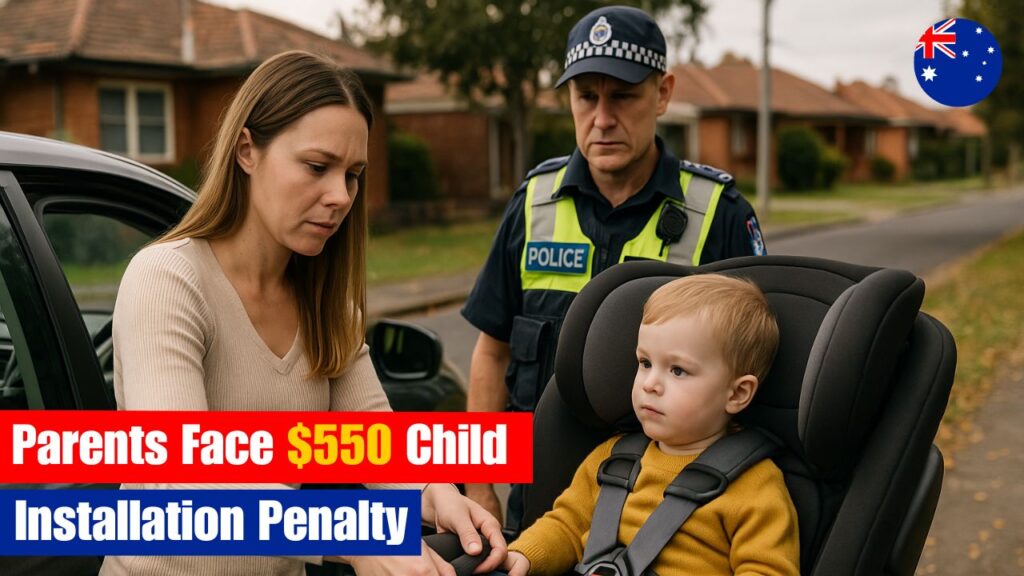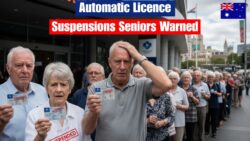Australia is introducing a major update to child safety rules, with a stricter child car seat law coming into force from 2 December. The new regulation aims to strengthen protection for young passengers and ensure that all restraint systems are installed properly. Parents and guardians across the country are being warned that incorrect installation could now lead to fines of up to $550. As Australia continues to prioritise road safety, these changes highlight the growing need for proper awareness, updated equipment, and safer travel practices for every family.

New Child Car Seat Law Implementation in Australia
The latest child car seat law introduces firm requirements to ensure that every seat is fitted correctly and securely. Authorities highlight that many parents unknowingly use restraints with loose harness straps, wrong anchor points, or expired restraint systems, which significantly increases risk in an accident. Under the updated rules, families must follow installation instructions using approved safety guidelines to avoid penalties. With new roadside checks being rolled out nationally, the government aims to create a safer environment for young vehicle occupants and reduce injury rates dramatically.
Stricter Child Seat Compliance for Australian Parents
Australian parents are now required to comply with more detailed standards to ensure children travel safely at all times. The stricter laws focus on eliminating the common misuse of car seats such as incorrect recline angles, unsecured tether points, or incompatible booster seats. Authorities emphasise choosing age-appropriate restraints, checking correct seat height, and making regular adjustments as children grow. The updated framework encourages parents to make routine safety checks and to use professional fitting stations when unsure. This shift aims to decrease preventable injuries and strengthen public awareness around proper installation.
Penalties and Enforcement for Incorrect Car Seat Installation
From 2 December, enforcement officers across Australia will begin issuing immediate fines for incorrect or unsafe child car seat setups. The updated penalty structure includes a standard $550 fine, targeting drivers who fail to follow mandatory restraint laws or transport children using unsafe seat positions. Authorities state that incorrect setup can place children at high collision risk and drastically reduce protection during impact. To support compliance, officials will offer guidance during roadside checks and encourage parents to seek certified installation support for added assurance.
Summary of Safety and Compliance Expectations
The nationwide rollout of these stricter child car seat laws reflects Australia’s ongoing commitment to improving road safety for families. By enforcing clearer instructions, promoting safer restraint practices, and encouraging regular installation checks, the reforms aim to reduce preventable injuries. Parents are urged to take the new guidelines seriously, ensure they are using age-appropriate seats, and prioritise correct harness alignment before every trip. With higher penalties now in place, understanding and following these rules becomes essential for all families.
| Requirement | Description |
|---|---|
| Age-appropriate seat | Children must use restraints suitable for their age and size. |
| Correct installation | Seats must be fitted using approved anchorage points. |
| Inspection checks | Parents encouraged to use authorised fitting stations. |
| Fine amount | Incorrect installation carries a $550 penalty. |
| National enforcement | Roadside compliance checks begin on 2 December. |
Frequently Asked Questions (FAQs)
1. When do the new child car seat laws begin?
The laws take effect nationwide on 2 December.
2. What is the fine for incorrect car seat installation?
The penalty for improper setup is $550.
3. Do all parents need to update their restraint systems?
Parents must ensure their current restraints meet safety requirements.
4. Are roadside checks going to be regular?
Yes, authorities will conduct routine compliance inspections.




